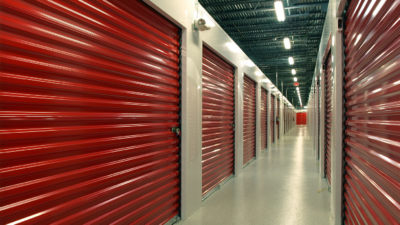The COVID-19 pandemic took center stage at the end of the first quarter, hitting the U.S. economy hard. During the six weeks to the end of April, 30.3 million initial jobless claims were filed, pushing the unemployment rate close to 20%. There was some good news for the industrial sector, however, as a strong Q4 2019 and beginning of Q1 2020 helped mitigate some of the impact to industrial properties. At the end of the first quarter, U.S. industrial property fundamentals remained relatively healthy with minimal disruptions to the current growth trajectory. In fact, quarterly occupancy gains totaled 63.5 million square feet — nearly double the 32.5 million square feet recorded one year ago. Typically, first quarters tend to be the lowest quarter for net absorption in each year, yet Q1 2020 totals reached levels not seen since the strongest expansion quarters in 2016 and 2017.
Development pipelines remained robust at the close of the first quarter with most state authorities deeming industrial construction as an essential business. Q1 2020 new supply outpaced the previous year by 41.9% and totaled 84 million square feet. Robust construction deliveries did cause overall vacancy to rise, however, and Q1 2020 vacancy rose 20 basis points year over year to 5.2%. Speculative development in the pipeline prior to COVID-19 will likely continue as planned, yet new speculative projects have largely been put on hold indefinitely, awaiting a more favorable economic climate. Build-to-suit projects, however, will break ground in the current environment, given occupiers’ rapidly evolving needs.
 The Inland Empire continues to dominate as one of the top industrial markets with Q1 2020 absorption totaling nearly 10.4 million square feet. This is followed by other major markets including Dallas-Fort Worth (8.1 million square feet), Chicago (7.2 million square feet) and Houston (3.3 million square feet). Houston added the most new supply at the beginning of the year (9.8 million square feet) with seven facilities built in the quarter that were larger than 300,000 square feet, including a 1.0-million-square-foot manufacturing facility for Coca-Cola. Dallas-Fort Worth claimed the top spot for buildings under construction, with 35.3 million square feet under development.
The Inland Empire continues to dominate as one of the top industrial markets with Q1 2020 absorption totaling nearly 10.4 million square feet. This is followed by other major markets including Dallas-Fort Worth (8.1 million square feet), Chicago (7.2 million square feet) and Houston (3.3 million square feet). Houston added the most new supply at the beginning of the year (9.8 million square feet) with seven facilities built in the quarter that were larger than 300,000 square feet, including a 1.0-million-square-foot manufacturing facility for Coca-Cola. Dallas-Fort Worth claimed the top spot for buildings under construction, with 35.3 million square feet under development.

Huntsville, AL topped the list of growth markets, with quarterly growth exceeding 3%. The completion of Blue Origin’s engine production facility, a 333,000-square-foot manufacturing build-to-suit project, helped propel Huntsville’s growth. The Huntsville market recorded 1.0 million square feet of positive absorption during the first quarter, nearly double the occupancy gains recorded a year ago.

A key trend to keep an eye on in the coming quarters is the rise in safety stock levels. Occupiers are being forced to reconsider their lean inventory strategies and start padding inventory with additional product on hand. This should spur further demand for industrial space. Healthy levels of new supply, as well as increased demand for essential supplies, maintained momentum in the industrial sector during the first quarter, and should offset some of the economic impact of COVID-19.
About the Author:
Amanda Ortiz is the director of national industrial research at Colliers. Based in Chicago, Amanda partners with national and local teams to deliver market intelligence initiatives and provide direction to drive national competitive advantage through research strategy, development and analytics.

 U.S. National Research
U.S. National Research
 Craig Hurvitz
Craig Hurvitz
 Aaron Jodka
Aaron Jodka